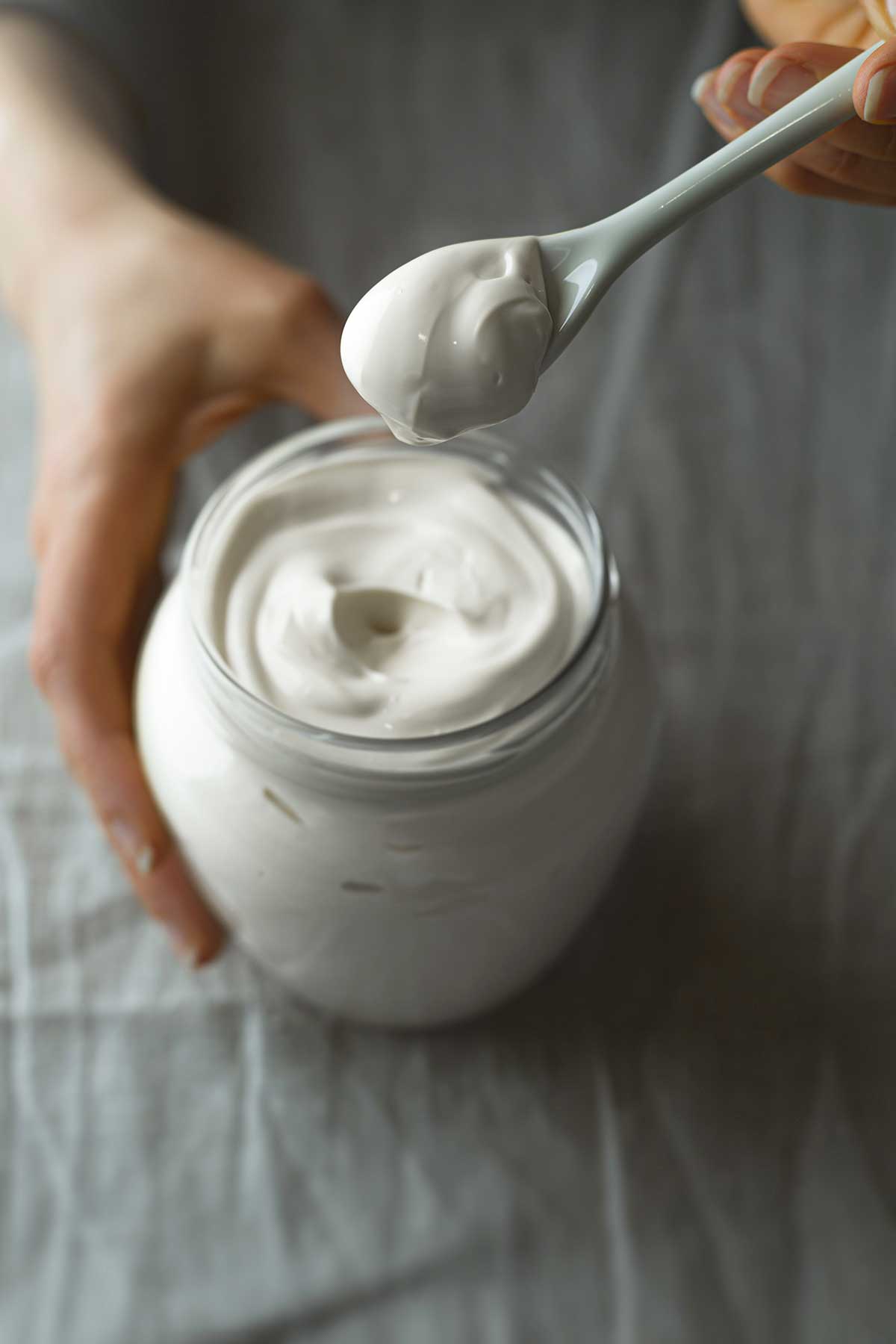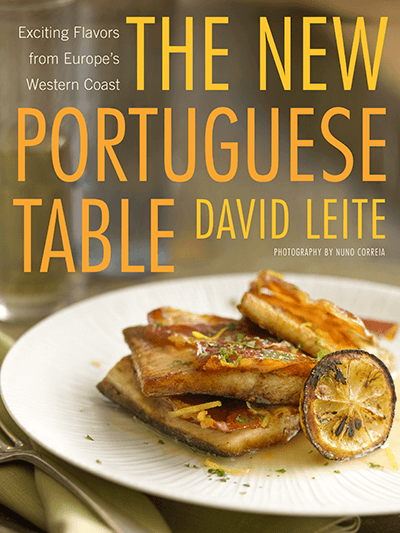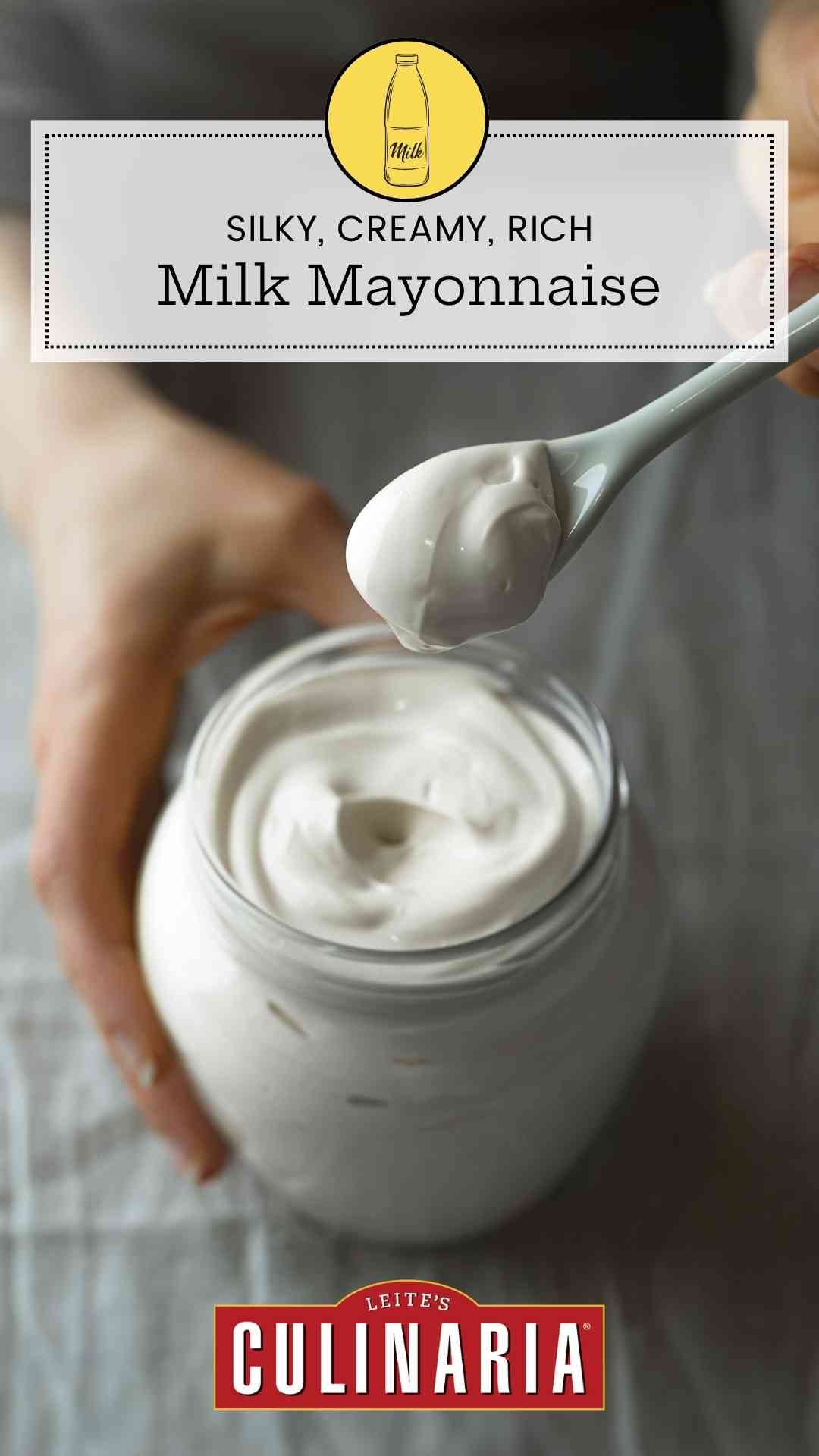
This is one of those recipes that require quotation marks, not out of affectation, but because it’s not a true mayonnaise. It contains no egg yolks or mustard. It’s nothing more than an emulsion of milk and oil. More Brazilian than Portuguese, it’s just now beginning to be used on the Continent. The taste is lighter and cleaner than that of egg-based mayonnaise, allowing other flavors to come through.
☞ Read the Article: The Secret Behind Milk Mayonnaise
Since I was given the recipe, I haven’t stopped finding ways to cook with it. The master recipe is only a canvas for additions. Besides the uses in this book, I’ve smeared the variations on grilled meats and fish, used them as dips and in dressings, spread them on sandwiches, and stirred them into potato salads, much as I do with actual mayonnaise.
Why Isn’t my Mayonnaise Emulsifying?
Like all emulsions, this recipe can be a bit finicky. But adding the oil in a thin stream and stopping when the right consistency is reached is the key. For almost foolproof results, a handheld blender is best, but a small canister blender with a narrow base will do (tall and narrow is best here). Don’t do as some of us did and assume that a stand mixer or food processor will work—it just won’t. If you’re working with a less-than-powerful immersion blender, the consistency of the mayonnaise may turn out thinner than you’d expect. You can help it along by slowly adding 2 more tablespoons of oil to the milk mayonnaise as you continue to blend and it will thicken nicely.

Milk Mayonnaise
Ingredients
- ⅓ cup very cold milk
- ¾ teaspoon fresh lemon juice
- 1 small garlic clove, peeled
- ⅛ teaspoon white pepper
- About ¾ cup vegetable oil, or 1/2 cup (118 ml) vegetable oil plus 1/4 cup (60 ml) olive oil
- Kosher salt
Instructions
- Combine the milk, lemon juice, garlic, and pepper in a 2-cup glass measuring cup. Using a handheld blender (or a blender), buzz on high for 30 seconds until frothy.
- With the motor running on high, slowly pour in the oil a few drops at a time, and gradually increase this to a fine thread, moving the blender up and down, until the mixture thickens lusciously and resembles a soft mayonnaise. You may need more or less oil.
- Season with salt to taste. The mayonnaise will last up to 1 week in the fridge.
Notes
Milk mayonnaise variations
Clockwise from top right: cilantro-ginger, curry, anchovy, sun-dried tomato.
Cilantro and Ginger Milk Mayonnaise | Maionese de Leite com Coentros e Gengibre
Add 1 loosely packed cup of well-dried fresh cilantro leaves and tendril-soft stems and a 1 1/2-inch peeled and grated thumb of ginger to the cup along with the milk, 1 3/4 teaspoons of lemon juice, and the pepper. Omit the garlic. Whir in the oil as directed above. Stir in 1 scallion cut into thin slices on the diagonal.Anchovy Milk Mayonnaise | Maionese de Leite com Anchovas
Add 6 anchovy fillets (generous 1 tablespoon) packed in oil to the cup along with the milk, lemon juice, garlic, and pepper. Whir in the oil as directed above. Omit the salt.Curry Milk Mayonnaise | Maionese de Leite com Caril
Add 2 teaspoons of your favorite curry powder to the cup along with the milk, lemon juice, garlic, and pepper. Whir in the oil as directed above. Before using, let this sit for an hour or so in the fridge to bloom.Tomato Milk Mayonnaise | Maionese de Leite com Tomate
Add 1 1/2 tablespoons of double-concentrate tomato paste to the cup along with the milk, garlic, and pepper. Omit the lemon juice. Whir in the oil as directed above. Stir in 1 tablespoon minced oil-packed sun-dried tomatoes.
Nutrition
Nutrition information is automatically calculated, so should only be used as an approximation.











Well, I’m a bit late to the milk mayo party. I can’t remember what I was hunting for when I found this site and got sucked in. An hour or so later I ran into this post and just had to try it.
Wanting this for a potato based salad, I used whole milk, a small clove of garlic, 3 anchovies, tarragon vinegar instead of lemon and added a 1/4 tsp of prepared mustard. I used a bland rice bran oil and a stick blender. Not sure how long it took, but it worked a treat! I had about 20 ml of oil left when the emulsion became nicely thick.
For most things, I would probably use mayonnaise because I want that richness, but as the base for a dip, like the tempting looking green olive one this ‘mayo’ would be preferable.
This ‘mayo’ will be a godsend in summer for buffet and BBQ salads where egg based mayonnaise dressings are too dangerous.
Thank you for this recipe, and a very interesting site that I’m delighted I stumbled across.
Pollyanna, first: welcome. I hope you find a lot more of what you’re looking for. What sets us apart from other sites is all the recipes are tested, so we’ll take out the guesswork. Only those recipes that pass our gauntlet of testers make it on the site.
And I’m thrilled that you’ve discovered my milk mayonnaise. I hope you find it to be a useful substitute in your cooking.
David, you are an angel sent from above! I have been allergic to eggs and mustard since birth and for the past 32 years I have been using butter or sour cream on my sandwiches (which I don’t even like!). Most eggless mayonnaise recipes call for mustard to emulsify the mixture. And when it comes to salads that call for mayo I have yet to find a substitute–until now. I have just finished mixing up my first milk mayo and it fluffed up and tastes great. I cannot wait to try it on my sandwich tomorrow. Thanks again for sharing the recipe.
Desiree, my sincere pleasure.–Your angel, David
I want to say THANK YOU. I have an adult-onset egg allergy, and I was the sort of person who ate eggs all the time, and I dearly, dearly miss my mayo (especially my homemmade herb-and-olive-oil mayo!).This was, hands down, the best non-egg mayo I have tried, and I think I might have tried them all. And I can make it myself at home with things I already have on hand (I used 2%, very chilled, and less oil than called for, but about half extra virgin olive and half veg. oil, and it came out PERFECTLY).So very tasty.
Again, THANK YOU.
You’re quite, quite welcome, B. Maura. And when you’re bored, try some of the variations and add-ins for the milk mayonnaise. I’m always so pleased to see my readers coming up with so many exquisite riff on it.